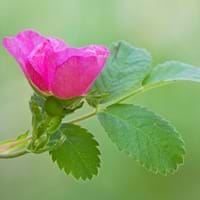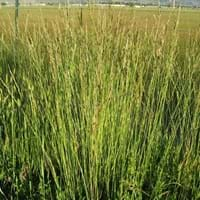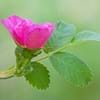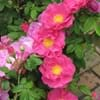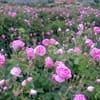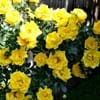Life Span
Perennial
Perennial
Type
Flowering Plants, Ornamental Plant, Perennial
Grass
Origin
California, Caribbean, Mexico
Hybrid origin
Types
Not Available
Alta fescue, Kentucky fescue
Number of Varieties
Not Available
Habitat
Chaparral, Foot Hills, Woodlands
meadows, Well Drained, yards
USDA Hardiness Zone
Not Available
5-8
AHS Heat Zone
Not Available
8 - 5
Sunset Zone
Not available
A1, A2, A3, 1a, 1b, 2a, 2b, 3a, 3b, 4, 5, 6, 7, 8, 9, 10, 14, 15, 16, 17, 18, 19, 20, 21, 22, 23, 24
Habit
Upright/Erect
Clump-Forming
Minimum Width
Not Available
Flower Color
Variety of colors
Pale White
Flower Color Modifier
Bicolor
Bicolor
Fruit Color
Non Fruiting Plant
Non Fruiting Plant
Leaf Color in Spring
Gray, Gray Green
Blue Green
Leaf Color in Summer
Gray, Gray Green
Light Green
Leaf Color in Fall
Gray, Gray Green
Blue Green
Leaf Color in Winter
Gray, Gray Green
Green, Tan
Leaf Shape
Pinnate
Grass like
Plant Season
Spring, Summer, Fall
Spring, Fall
Sunlight
Full Sun, Partial Sun
Full Sun, Partial Sun
Type of Soil
Loam, Sand
Clay, Loam
The pH of Soil
Acidic, Neutral
Neutral, Alkaline
Soil Drainage
Well drained
Average
Bloom Time
Spring, Late Spring, Early Summer, Summer, Late Summer, Early Fall, Fall
Not Available
Repeat Bloomer
Not Available
No
Tolerances
Drought
Not Available
Where to Plant?
Container, Ground, Pot
Ground
How to Plant?
Cuttings
Seedlings, vegetative cuttings
Plant Maintenance
Medium
Medium
Watering Requirements
Average Water Needs
Allow to dry out slightly between watering, Never Over-water
In Summer
Lots of watering
Lots of watering
In Spring
Moderate
Moderate
In Winter
Average Water
Average Water
Soil pH
Acidic, Neutral
Neutral, Alkaline
Soil Type
Loam, Sand
Clay, Loam
Soil Drainage Capacity
Well drained
Average
Sun Exposure
Full Sun, Partial Sun
Full Sun, Partial Sun
Pruning
Remove damaged leaves, Remove dead branches, Remove dead leaves
Prune after flowering, Prune for size control, Remove dead or diseased plant parts
Fertilizers
All-Purpose Liquid Fertilizer
All-Purpose Liquid Fertilizer
Pests and Diseases
Beetles, Black Spot, Caterpillars, Downy mildew, Mosaic viruses, Powdery mildew, Rust, Scale insects, Thripes
Brown patch, Gray leaf blight, Pythium blight, Rust, Zoysia patch
Plant Tolerance
Drought
Full Sun, Heat And Humidity
Flowers
Showy
Insignificant
Flower Petal Number
Double
Single
Edible Fruit
Not Available
No
Foliage Texture
Medium
Medium
Foliage Sheen
Glossy
Matte
Invasive
Not Available
Sometimes
Self-Sowing
Not Available
Yes
Attracts
Birds, Butterflies
Mealybugs, Mites
Allergy
Rash
Skin rash, Vomiting, Watery eyes
Aesthetic Uses
Showy Purposes
Ground Cover, Used in parkland
Beauty Benefits
Not Available
Not Available
Environmental Uses
Air purification
Fixes Nitrogen, Prevent Soil Erosion
Medicinal Uses
Not Available
Antispasmodic
Part of Plant Used
Flowers
Whole plant
Other Uses
Oil is used in perfume, soaps, creams, etc.
Animal Feed, Used as Ornamental plant
Used As Indoor Plant
Yes
No
Used As Outdoor Plant
Yes
Yes
Garden Design
Container, Cutflower, Feature Plant, Foundation, Mixed Border, Topiary / Bonsai / Espalier
Groundcover, Lawns and Turf
Botanical Name
Rosa californica
Festuca arundinacea
Common Name
California wildrose, California rose
Tall Fescue
In Hindi
कैलिफोर्निया गुलाब
tall fescue
In German
Kalifornische Hecken-Rose
Rohr-Schwingel
In French
Le rosier de Californie
Festuca arundinacea
In Spanish
Rosa californica
Festuca arundinacea
In Greek
Καλιφόρνια αυξήθηκε
tall fescue
In Portuguese
California aumentou
Festuca arundinacea
In Polish
California róży
Kostrzewa trzcinowa
In Latin
California resurrexit
tall fescue
Phylum
Magnoliophyta
Magnoliophyta
Class
Magnoliopsida
Liliopsida
Clade
Not Available
Angiosperms, Commelinids, Monocots
Tribe
Not Available
Not Available
Subfamily
Not Available
Not Available
Number of Species
Not Available
Not Available
Season and Care of California Rose and Tall Fescue
Season and care of California Rose and Tall Fescue is important to know. While considering everything about California Rose and Tall Fescue Care, growing season is an essential factor. California Rose season is Spring, Summer and Fall and Tall Fescue season is Spring, Summer and Fall. The type of soil for California Rose is Loam, Sand and for Tall Fescue is Clay, Loam while the PH of soil for California Rose is Acidic, Neutral and for Tall Fescue is Neutral, Alkaline.
California Rose and Tall Fescue Physical Information
California Rose and Tall Fescue physical information is very important for comparison. California Rose height is 150.00 cm and width 150.00 cm whereas Tall Fescue height is 5.10 cm and width Not Available. The color specification of California Rose and Tall Fescue are as follows:
California Rose flower color: Variety of colors
California Rose leaf color: Gray and Gray Green
Tall Fescue flower color: Pale White
- Tall Fescue leaf color: Blue Green
Care of California Rose and Tall Fescue
Care of California Rose and Tall Fescue include pruning, fertilizers, watering etc. California Rose pruning is done Remove damaged leaves, Remove dead branches and Remove dead leaves and Tall Fescue pruning is done Prune after flowering, Prune for size control and Remove dead or diseased plant parts. In summer California Rose needs Lots of watering and in winter, it needs Average Water. Whereas, in summer Tall Fescue needs Lots of watering and in winter, it needs Average Water.
